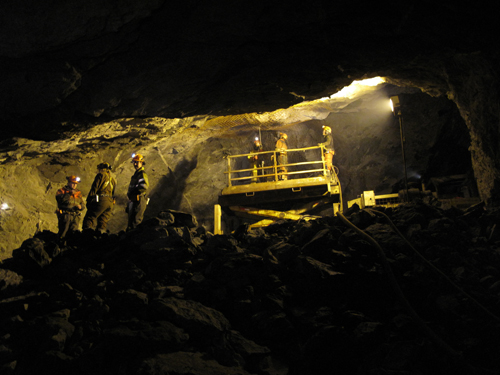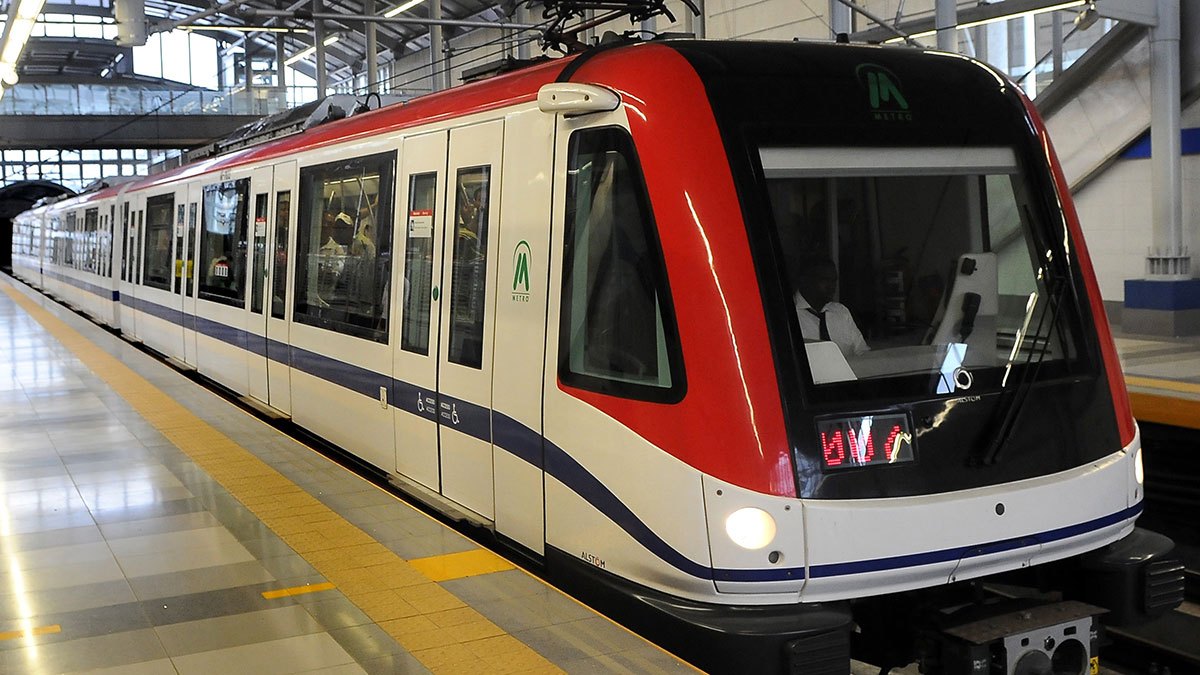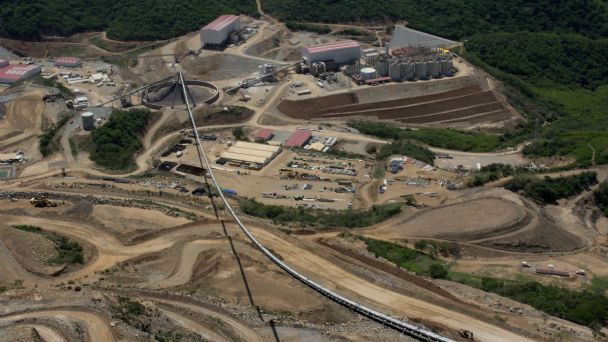
The Bureau of Minerals and Petroleum is a Greenlandic government agency, working under the Ministry for Industry and Minerals and responsible for overseeing the growth of the nation’s resources. This is a burning issue in this volatile nation, which has just appointed its first female Prime Minister who is clearly keen to encourage the country’s emergent mining industry and has taken the initiative to lift the existing ban on the extraction of uranium. The island has the potential for very large deposits of uranium (and almost everything else it would appear) but as an independent state within the Kingdom of Denmark it has previously stuck to that country’s interdict on dealing in any way with radioactive materials.
The next ten years will be interesting, and have the potential to change completely the political and social dynamics of Greenland. However the impression that Greenland’s appearance on the world minerals stage is an unexpected phenomenon needs to be dispelled says Jørn Skov Nielsen, Deputy Minister at the Ministry of Industry and Mineral Resources: “There has been a gradual build-up in the mineral sector over the last ten years. Over that time the number of licences has increased and a number of small companies are taking them up.”
In 1998 when the BMP took over from the Danish authorities, he explains, the minerals industry in Greenland saw a decline in the numbers of licences, and also a decline in general interest in exploring Greenland and its mineral potential. It hit an all-time low in 2002. As a response, the BMP designed a marketing strategy to promote Greenland’s mineral potential based on the experience of the two biggest mining countries in the world: Australia and Canada. In a few years the downward trend was reversed. From 17 exclusive licences in 2002 the number grew to more than 94 in 2011.
Nevertheless, it has proved difficult to secure the necessary investment and commitment to turn prospective areas into producing mines. One of the only mines currently producing in Greenland is gold from the Nalunaq mine owned by the UK based Angel Mining (Gold), and that is reaching the end of its viable life.
The largest, most imminent and most viable project in the country, and one having the scale to make a real difference to the economy, is London Mining’s iron ore project at Isua, 150 kilometres to the north of the capital Nuuk. “This is a very big project in Greenland terms, with a capex of around $2.3 billion,” says Nielsen. “If it goes ahead it will have the potential to create 800 jobs, and bring in considerable revenues for the government in terms of taxes, royalties and economic stimulation.” Environmental and social impact assessments have been completed as well as a bankable feasibility study for an operation of 15 million tonnes per annum. BMP is currently considering an impact benefit agreement (IBA) that will outline the impacts of the project and how the community can participate, preparatory to issuing a mining licence.
Though it only has a population of 57,000, Greenland suffers from unemployment like everywhere else. For millennia its chief industry has been fishing, which accounts for 90 percent of its exports. Whatever government is running the country, diversifying the economy has to be a priority, though at the same time it will be essential to protect and preserve the fishing industry and the communities that depend on it. The current administration has no interest in facilitating a runaway bonanza on the back of rising commodity prices. Minerals, and possibly hydrocarbons will play their part in the diversification process but it can only be allowed to happen in a controlled way, says the deputy minister.
Mining development and the inward investment it brings should be encouraged, agrees Dr Henrik Stendal, Head of the Geology Department in the Ministry of Industry and Mineral Resources. “It will have to be sustainable and in harmony with fishing, tourism and our natural environment and ecology. That way society will be able to move forward in pace with development.” So the current state is that a number of projects are on the starting blocks but the gun has not yet been fired – when it is, the race will be a marathon rather than a sprint.
The same thing applies to offshore hydrocarbons. There are currently 20 exclusive and 25 non-exclusive exploration licences, says Stendal, involving major players like Statoil, Exxon, Dong Energy, ConocoPhilips, Shell, Cairn Energy and Maersk Oil as well as the national oil and gas company Nunaoil. “There is also a licensing round off East Greenland - but it is all exploration at this stage. It will take a number of years at best before any production can start. It has been demonstrated that there is a viable hydrocarbon system in Greenlandic waters but we have not found commercial quantities yet,” he adds.
Exploration drilling in 2010 and 2011 was followed by the acquisition of useful quantities of seismic data. The best estimate of the available resources comes from geophysical data provided by the United States Geological Survey (USGS) the ‘mean’ estimate for the area to the northwest of Greenland was 31 billion barrels and for the northeast 17 billion barrels. Both estimates are for oil and gas combined, measuring the latter in oil-equivalent units.
Onshore, apart from the iron ore project already mentioned, there are two potentially significant mining projects that could be advanced in the near future. One is the rare earth elements (REE) discovery of Kringlerne owned by the Australian Tanbreez in south Greenland, which also contains significant amounts of zirconium. “They are experimenting with how best to process the ore, but this is one of the largest reserves of heavy rare earths in the world, another world class resource.” With more than four billion tonnes of this ore in south Greenland, and China's ability to supply it declining, Greenland's potential to satisfy at least a quarter of global demand in the future means a lot to European and American industry.
An application for a small gemstone project in the southwest Greenland is going through currently, Stendal adds, but attracting even more interest is an application expected later this year do develop a zinc deposit in the north. “The company has completed a pre-feasibility study on the deposit, and believes it can be mined commercially,” says Stendal. “It is in a really remote area, but this is a world class deposit. One of the biggest challenges up there is to get the ore out, because of the ice.” This is a difficult but not impossible task, he explains: there is a two month window in the summer when ships can get in to take off the concentrate, though icebreakers will probably have to be used.
The further north you go the more ice there is, but it's common knowledge that the ice cap on Greenland is receding. That's alarming news for the world, but it is making exploration and mining easier. Henrik Stendal points to the Black Angel mine which yielded very high quality zinc ore till it was mothballed in 1990 because of low world prices and the fact that the ore was nearly exhausted. However, receding ice has revealed a larger surface deposit, So the mine might open again within a few years.
There's considerable upside in these projects, but don't look for a bonanza, says the prudent Jørn Skov Nielsen. Mining companies will usually have to build their own roads and harbours and generate their own power to operate in these remote places. Greenland is as big as Western Australia but it is not as easy to get about. Infrastructure will increase their costs. Then they have to consider environmental protection and rehabilitation costs, he points out. “We are a fishing nation and want to keep that industry protected – our environment has been a priority whatever the colour of the government.” before mining starts enough money must be deposited to cover the cost of returning the site to its original state, he says, including the removal of roads and harbours.
One thing that Greenlanders have been worried about is that a quantity of foreign workers, particularly Chinese, would come in and take all the new jobs. “We do have a challenge to educate our people.” admits Nielsen. But the government has done its bit by setting up the Greenland Mining School in Sisimiut, and the mining companies will be expected to participate in competence building, he stresses. Making sure the population has a strong voice in the future development of the resource sector is assured by following the successful Canadian model where impact and benefit agreements are the norm, he says.
Greenland is a huge land mass, undoubtedly rich in minerals and probably rich in offshore oil and gas. However for the time being it is neither a mining nor an oil economy. “We are getting close to mineral exploitation but oil production will not begin within the first decade, and we are determined that this will happen in a controlled and responsible way,” concludes Jørn Skov Nielsen. “The last thing we want is a free-for all!”
Written by John O'Hanlon, research by Richard Halfhide
DOWNLOAD
 BMP-Greenland-SPR-Bro-s.pdf
BMP-Greenland-SPR-Bro-s.pdf













